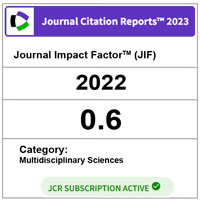Prediction of Covid-19 Cases for Malaysia, Egypt, and USA using Deep Learning Models
DOI:
https://doi.org/10.11113/mjfas.v19n3.2992Keywords:
Covid-19, Deep Learning, Prediction, LSTM, GRU, MalaysiaAbstract
Forecasting in pandemics and disasters is one of the means that contribute to reducing the damage of this pandemic, and the Corona virus is reportedly the most dangerous pandemic that the entire world is suffering from. As a result, we aim to use a deep learning algorithm to predict confirmed and new cases of Covid-19 in our study. This paper identifies the most essential deep learning techniques. Long short-term memory (LSTM) and gated recurrent unit (GRU) were shown to forecast verified Covid-19 fatalities in Malaysia, Egypt, and the U.S. using time series data from 1 January 2021 to 14 May 2022. The first section of this study examines a comparison of prediction models, while the second section examines how prediction and performance analysis may be enhanced using mean absolute error (MAE), mean absolute error percentage (MAPE), and root mean squared error (RMSE) Metrics. On the basis of the regression curves of two two-layer models, the data were split into training sets of 80% and test sets of 20%. The conclusion is that the outputs of the training model and the original data greatly converged. The findings of the study indicated that, for predicting Covid-19 cases, the GRU model in the three nations is superior than the LSTM model.
References
Yang, Z., Zeng, Z., Wang, K., Wong, S-S., Liang, W., Zanin, M., Liu, P., Cao, X., Gao, Z. and Mai, Z. (2020). Modified SEIR and AI prediction of the epidemics trend of COVID-19 in China under public health interventions. J. Thorac. 12, 165.
World Health Organization. (2022). WHO Coronavirus (COVID-19) Dashboard. https://covid19.who.int/. (accessed Sep. 07, 2022).
Wang, W., Wang, S., Gao, J., Zhang, M., Chen, G., Ng, T. K. and Ooi, B. C. (2018). Rafiki: Machine learning as an analytics service system. ArXiv Prepr. ArXiv180406087.
Wang, S., Hou, Y., Li, X., Meng, X., Zhang, Y. and Wang, X. (2021). Practical implementation of artificial intelligence-based deep learning and cloud computing on the application of traditional medicine and western medicine in the diagnosis and treatment of rheumatoid arthritis. Front. Pharmacol., 12.
Omran, N. F., Abd-el Ghany, S. F., Saleh, H., Ali, A. A., Gumaei, A. and Al-Rakhami, M. (2021). Applying deep learning methods on time-series data for forecasting COVID-19 in Egypt, Kuwait, and Saudi Arabia Complexity 2021.
Chimmula, V. K. R. and Zhang, L. (2020). Time series forecasting of COVID-19 transmission in Canada using LSTM networks Chaos Solitons. Fractals, 135, 109864.
Arun Kumar, K., Kalaga, D. V., Kumar, C. M. S., Kawaji, M. and Brenza, T. M. (2022). Comparative analysis of Gated Recurrent Units (GRU), long Short-Term memory (LSTM) cells, autoregressive Integrated moving average (ARIMA), seasonal autoregressive Integrated moving average (SARIMA) for forecasting COVID-19 trends. Alex. Eng. J., 61, 7585-603.
Azarafza, M., Azarafza, M. and Tanha, J. (2020). COVID-19 infection forecasting based on deep learning in Iran medRxiv.
Al-Qaness, M. A., Ewees, A. A., Fan, H. and Abd El Aziz M. (2020). Optimization method for forecasting confirmed cases of COVID-19 in China. J. Clin. Med., 9, 674.
Dairi, A., Harrou, F., Zeroual, A., Hittawe, M. M. and Sun, Y. (2021). Comparative study of machine learning methods for COVID-19 transmission forecasting. J. Biomed. Inform., 118, 103791.
Zeroual, A., Harrou, F., Dairi, A. and Sun, Y. (2020). Deep learning methods for forecasting COVID-19 time-Series data: A Comparative study Chaos Solitons. Fractals, 140, 110121.
Shin, H-C., Roth, H. R., Gao, M., Lu, L., Xu, Z., Nogues, I., Yao, J., Mollura, D. and Summers, R. M. (2016). Deep convolutional neural networks for computer-aided detection: CNN architectures, dataset characteristics and transfer learnin. IEEE Trans. Med. Imaging, 35, 1285-98.
Hamzah, F. B., Lau, C., Nazri, H., Ligot, D. V., Lee, G., Tan, C. L., Shaib, M., Zaidon, U. H. B., Abdullah, A. B. and Chung, M. H. (2020). CoronaTracker: worldwide COVID-19 outbreak data analysis and prediction. Bull World Health Organ., 1, 1-32.
Joseph Assaker. (2022). Covid-19 Global dataset, retrieved from :https://www.kaggle.com/datasets/josephassaker/covid19-global-dataset.
Alassafi, M. O., Jarrah, M. and Alotaibi, R. (2022). Time series predicting of COVID-19 based on deep learning. Neurocomputing, 468, 335-44.
Shahid, F., Zameer, A. and Muneeb, M. (2020). Predictions for COVID-19 with deep learning models of LSTM, GRU and Bi-LSTM Chaos Solitons. Fractals, 140, 110212.
Bedi, P., Dhiman, S., Gole, P., Gupta, N. and Jindal, V. (2021). Prediction of COVID-19 trend in India and its four worst-affected states using modified SEIRD and LSTM models SN. Comput. Sci., 2, 1-24.
Matta, D. M. and Saraf, M. K. (2020). Prediction of COVID-19 using machine learning techniques.
Hasan, K. T., Rahman, M. M., Ahmmed, M., Chowdhury, A. A. and Islam, M. K. (2021). 4P model for dynamic prediction of COVID-19: a statistical and machine learning approach. Cogn. Comput., 1-14.
Indriyani, C. A., Wijaya, C. R. and Qomariyah, N. N. (2022). Forecasting COVID-19 Total Daily Cases in Indonesia Using LSTM Networks. 2022 5th International Conference on Computing and Informatics (ICCI) (IEEE), pp 385-91.
Alakus, T. B., & Turkoglu, I. (2020). Comparison of deep learning approaches to predict COVID-19 infection. Chaos, Solitons & Fractals, 140, 110120.
Dash, S., Chakravarty, S., Mohanty, S. N., Pattanaik, C. R., & Jain, S. (2021). A deep learning method to forecast COVID-19 outbreak. New Generation Computing, 39(3-4), 515-539.
Downloads
Published
Issue
Section
License
Copyright (c) 2023 MUHAMMAD SAFWAN ABD AZIZ, Riyam A. Hasan, Jehana Ermy Jamaluddin

This work is licensed under a Creative Commons Attribution-NonCommercial 4.0 International License.








